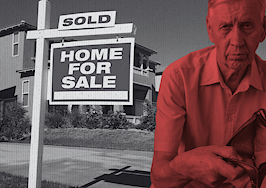- Current housing supply is inadequate to meet the needs of an aging population.
- By 2035, more than one in five people in the U.S. will be aged 65 and older.
- Homes will need more age-friendly elements such as zero-step entrances, single-floor living and wide halls and doorways that can accommodate walkers and wheelchairs.
- Multi-generational housing may play a greater role in the future.
As baby boomers have marched through history, they’ve changed many institutions along the way. Aging baby boomers are now changing the way we consider retirement, and the resulting impact on the housing market will be substantial.
The Harvard Center for Housing Studies has released a report, “Projections and Implications for Housing a Growing Population: Older Adults 2015-2035.”
The report, funded by the AARP Foundation, illustrates a stark fact: The current housing supply is inadequate to meet the needs of an aging population.
The study shows that by 2035, more than one in five people in the U.S. will be aged 65 and older, and one in three households will be headed by someone in that age group. This massive 65-plus demographic is expected to grow from 48 million to 79 million in the same span.
Age brings changes in health and mobility that much of the current housing stock is not built to accommodate. Most older adults are homeowners, and that is predicted to increase outside of just the 65-plus range.
Going forward, the Joint Center for Political and Economic Studies projects that the number of owner households headed by someone aged 80 or older will more than double from nearly 6 million to more than 12 million within the next 20 years.
Aging in place
As people age, many of them want to age in place. In order to do this successfully, their homes will need more age-friendly elements, such as zero-step entrances, single-floor living and wide halls and doorways that can accommodate walkers and wheelchairs.
The Harvard report shows that only 3.5 percent of homes offer all three of these features. That gap presents a huge opportunity to create housing that is affordable, accessible and within reach of supportive services.
Home will also increasingly be where older people receive the care they need by both preference and necessity.
Low-income renters are particularly vulnerable, because nearly 6.4 million low-income renters will be paying more than 30 percent of their income for housing by 2035, according to the report. The report adds that 11 million homeowners will be also be in this position by that time.
The rise of the single household
By 2035, there will be 9.3 million one-person households aged 80 or over, the report shows, representing 57 percent of households in that age group.
Single-person households have lower incomes and higher rates of disabilities and are also more likely to pay for care than their married counterparts, even with their limited resources.
This could lead to a crisis where many people will be paying more for housing. In fact, the report estimates 8.6 million people will be paying more than half their income for housing by 2035.
The report also projects that 7.6 million older adults will have incomes that would qualify for federal rental subsidies by 2035, an increase of 90 percent from 2013.
“Today, however, we only serve one-third of those who qualify for assistance. Just continuing at this rate — which would be a stretch — would leave 4.9 million people to find affordable housing in the private market,” Jennifer Molinsky, senior research associate at the Joint Center, said in the report.
Beyond the nursing home
Even as the older population has increased, the usage of nursing homes has declined in the past 20 years as people prefer either assisted living or in-home care options.
The report shows that around 3.2 percent of older adults currently reside in group quarters (mostly nursing homes), but that may increase as people get older and face increased challenges. By 2035, nearly 27 million households aged 65 and over will have at least one person with limitations in running a household, according to the study.
One housing model on the rise is the “village” concept, offering shared services. New housing construction in town centers can also help older adults engage more in the community.
If built according to principles of universal design, the housing stock will be more flexible and suitable for all members of society, not just older adults.
Opportunities for the future
- Multi-generational housing may play a greater role in the future. According to the report, nearly 8 percent of the population aged 65 to 79 currently live in the homes of relatives, with this share rising to nearly 14 percent for those 80 and over. Multi-generational housing with in-law apartments are also better suited for the needs of live-in caregivers.
- Home modification will become a growing business. By 2035, 17 million older-adult households will have at least one person with a mobility disability, and more than 5 million of these will be renter households, the report shows. Also, 12.2 million households are projected to have self-care disabilities by 2035 and could also need modifications.
- The financial challenges of retirees may require new financial models for maximizing investments and letting people remain in their homes longer. We may see more reverse mortgages than ever and new financial models to help older people refinance or purchase. Tax and regulatory incentives can help unlock this potential.
- Driverless cars and other autonomous technology may play a larger role in helping us care for our elders, and we will likely see many investments in home-centered technologies that relate to making sure people are being properly monitored.
When it comes to the aging of America, the most important thing we can do is acknowledge that as we age, we will have to adapt to changes.
A certain bit of denial is in place for many of us, but as the report shows, it’s not too early to begin investing in these solutions — whether on an individual level by making sure your home has the features you will need as you age, or on a wider scale by advocating for additional types of housing to accommodate the elderly.
It may take time to create new zoning models and tax and regulations necessary to support our aging population.
Deidre Woollard is the co-founder of Lion & Orb, a real estate public relations company. Follow her on Twitter @Deidre.













